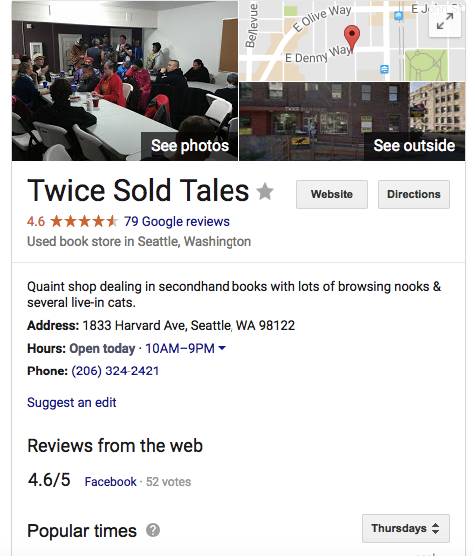Author: Neil Patel / Source: Quick Sprout I feel SEO has a reputation for being meticulous and painstaking. And perhaps that’s true to a c
I feel SEO has a reputation for being meticulous and painstaking.
And perhaps that’s true to a certain extent.
The initial phases of an SEO campaign can, in fact, be grueling.
There’s on-site SEO, off-site SEO, and—everyone’s favorite—technical SEO.
So, yeah, it can be kind of a pain.
But here’s the thing.
There is a multitude of “quick fix” SEO tactics that take hardly any time.
Many can be completed within 30 minutes.
Now, I’m not going to tell you that any specific technique will bring about massive results on its own.
But when done in conjunction with one another, they can have a significant impact and give your overall SEO campaign a nice boost.
So let’s get right down to it.
Here are 18 SEO tactics that will take you no longer than 30 minutes each.
1. Get set up on Google My Business
Local SEO is important, especially if you’re a brick-and-mortar business.
If you’ve been skimping on this aspect of SEO, you’ll want to spend a few minutes setting up an account on Google My Business.
This allows you to edit the info on your business, verify contact info, add images, monitor reviews, and more.

This can give you a huge advantage over competitors who fail to capitalize on this powerful resource.
2. Optimize your profile
Already have a profile on Google My Business?
Why not spend some time sprucing it up and making sure that everything is “just right?”
Here are a few specific things you can do:
- Make sure all your business info is up-to-date
- Add additional info such as hours, parking location, menu details, etc.
- Choose specific categories (e.g., “fresh organic grocery store” instead of just “grocery store”)
- Replace any amateurish looking images with newer, more professional ones
- Encourage loyal customers to leave reviews
3. Get set up on Google Search Console
I love Google Search Console!
If you’re not using it, you’re leaving money on the table and not getting the most from your SEO campaign.
Here’s a screenshot explaining exactly what Google Search Console is:

Although there is a wide array of features, here are some specific things you can do to improve your SEO:
- Check who’s linking to your site
- Check index status
- Monitor crawl errors
- Manually submit new content to be crawled
I recommend reading this post from Quick Sprout to learn how to use Google Search Console like a boss.
4. Check your site’s speed
I’m sure you know just how critical site speed is.
Even a one-second delay can have an adverse impact.

It only takes a few seconds, and it will provide you with details on what you can do to speed it up.
Here’s the info I got when I did a speed test for Quick Sprout:

5. Check your site’s mobile-friendliness
I think it’s safe to say that smartphones aren’t just a fad.
In fact, many experts labeled 2016 as “the tipping point” for mobile search, when it finally eclipsed desktop search.
Research found that the average American spent 87 hours browsing on their smartphone in August 2016.

If you haven’t done so already, take the time to run a mobile-friendly test.
This will let you know what shape your site is in and what steps you need to take (if any) to resolve any issues.
6. Improve URL structure
Here’s the scenario.
You’ve been blogging for awhile, maybe several years.
Back in the day, you didn’t pay all that much attention to the URL structure of your blog posts.
As a result, they look something like this:
It’s fair to say this isn’t going to do your SEO any favors, and it’s going to make it unnecessarily difficult for search engine robots to decipher the meaning of your content.
To make your site more SEO-friendly, go back and improve these URLs so they look more like this:
www.yoursite.com/blog/content-marketing-101
7. Improve mediocre titles
I’ll be honest.
Coming up with epic titles for blog posts can be a little tricky at times.
Maybe in the past, you ended up settling for less than stellar titles.
A good way to make use of 30 minutes is to look over your posts to identify any titles that could use improvement.
One helpful resource for streamlining this process is Title-Generator.com.
Simply enter your main keywords, and it will generate 700 potential titles with one click.
Here’s what happened when I entered “content marketing:”

8. Study AdWords ads to optimize titles and tags
Here’s a little hack I learned from Brian Dean of…

COMMENTS